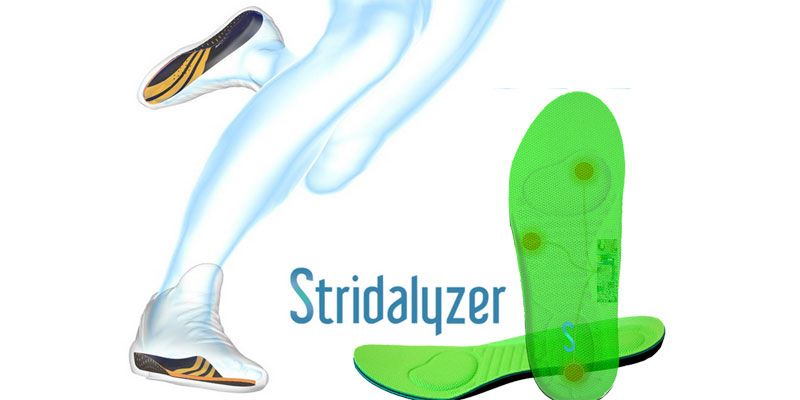How ReTiSense is taking fitness wearables to the next level
When it comes to fitness wearables, I must admit I’m quite the sceptic. Whether it’s GPS watches, or bands or even relatively older devices such as a heart rate monitor, I think of them as ‘show-off gadgets’ rather than something people actually use for fitness.

Then I came across the Stridalyzer. A wearable for runners, it analyzes the stride and gait and, among other things, can predict if one is heading for an injury. Even a non-runner like me could see the value of that kind of information to a runner or a sportsperson.
With running related injuries accounting for six of the top 10 sports injuries, this new device merits a deeper look. Here’s what we found.
The Stridalyzer is essentially a sensor fitted insole to be worn while running and works in combination with an app on the smartphone and cloud-based analytics.
Here’s how it works. During a run, the device constantly gathers data, learns the runner’s form, style and various pressure points, and provides real-time advice to the runner to help them run with the correct form. It also provides real-time visualization of stress and pressure on the feet and knees.
At the end of the run, the Stridalyzer app displays a complete analysis of form, speed, distance and rhythm, among other things.
Some of the data is uploaded to the cloud and a more detailed analysis and guidance is available to the runner in the Review mode.

It’s no coincidence, that Anshuman Singh, Co-founder of ReTiSense, the company behind Stridalyzer, is a long distance-runner himself.
“We planned to start a company in the IoT domain and one of the things we were looking at is to build technology that provides actionable help,” he said, explaining the principle behind Stridalyzer.
"Existing fitness trackers will tell you all kinds of metrics but nothing that will tell you about your running form.” As any trainer will tell you, exercise is all about the form.
What emerged was a running-oriented product that tells users how they are doing in the run, how to improve performance and avoid injury.
Anshuman and Shuvadeep Sarkar, the other Founder, are both primarily engineers who have worked for over a decade before starting up. Anshuman specializes in data analytics, while Shuvadeep has experience in system integration for mobile devices. ReTiSense also has four more team members, who look into product development and supply chain management.
ReTiSense has released the product to limited users, mostly to demonstrate its functionality.
They plan to take Stridalyzer for crowdfunding in the first week of December and the money raised will be invested in manufacturing that will be outsourced to companies in India, China and Taiwan.

ReTiSense also plans to partner with insole manufacturers, who supply to the bigger sport shoe makers, and will launch the Stridalyzer in the most popular shoe sizes.
The product is expected to go on sale in March and is likely to be priced at around $120-$140 a piece.
At a later stage, the company plans to offer premium features which will include one-on-one expert advice as well as analysis of your data by a sports expert.
Apart from the Indian market, ReTiSense also plans to sell the Stridalyzer in the US and UK. Its launch comes at a time when the global market for wearable fitness-tracking devices is expanding rapidly.
Gartner, the world’s leading technology research company, has estimated an annual growth rate of 40 percent for this segment, targeting a $30-$50 billion market by 2017.
To be sure, there are already some running-specific wearables already in the market that can give the Stridalyzer some competition. Let’s take a quick look:
Sensoria wearable socks/anklet: It comes with a pair of socks and an anklet to track cadence, foot landing technique and weight distribution on the foot as you walk and run. It costs about $199 per piece.
Runscribe: It is a sensor that can be attached to the back of the shoe, using a 9-axis sensor capture the movements of your foot during the gait cycle. It costs $150-$400 a piece.
But Stridalyzer has its own USP, points out Anshuman. “It is the only running device that also analyses the impact of gait on the knees, which is great news for runners as about 40% of all running injuries are knee injuries,” he said.
Would you buy a Stridalyzer? What would you look for in a running device? Share your views in the comments below.











